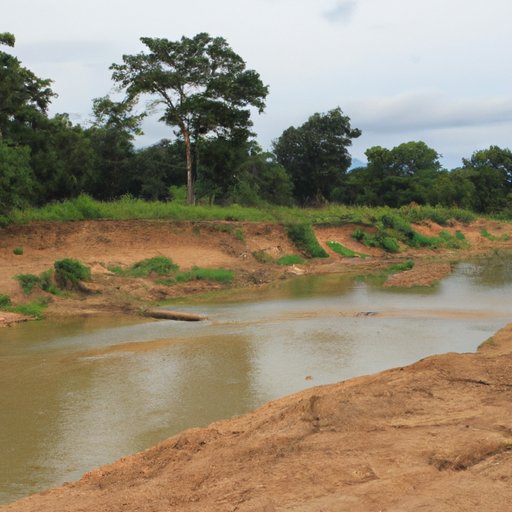Understanding Watersheds: Types, Impact, and Conservation
Water is an indispensable natural resource for humans and almost all living beings, acting as the cornerstone of human civilization. However, maintaining the sustainability of one of the world’s most precious resources is no easy feat. One of the most important factors that significantly impact the restoration and conservation of water is the existence of watersheds. In this article, we will discuss what watersheds are, their importance, the impact of human activities, urbanization, climate change, and community-driven watershed conservation projects. Let’s dive deeper to understand what a watershed is and why it matters?
Defining Watershed: A Beginner’s Guide to Understanding Watersheds and Their Importance
A watershed, also known as a drainage basin, is an area of land where water flows to a single point or outlet, such as streams or rivers, lakes, or oceans. It includes streams, wetlands, rivers, and groundwater. Every slope or terrain, whether small or large, is a part of a watershed. Thus, there are numerous watersheds across the globe, each unique in its physical characteristics, biology, and ecosystems. However, they all share one feature – all the spoils flow toward a common destination.
They play a significant role in preserving natural environments, alongside ecological balance. Watersheds also provide key ecological functions by filtering water and reducing the amount of nutrients and pollutants in the environment.
The History of Watersheds and Their Impact on the Environment
Watersheds are a vital ecological resource that has undergone major changes over time. Throughout human history, watersheds have served as sources of water for domestic, agricultural, industrial, and other purposes. The earliest civilizations built settlements in areas close to water sources that were often developed on watersheds to ensure access to water.
However, human activities have had a significant impact on watershed ecosystems, altering their physical structure and degrading their quality. Activities such as deforestation, mining, urbanization, and intensive farming lead to soil degradation and the destruction of wetlands and other ecosystems. These kinds of activities reduce biodiversity, contaminate the water and make it unsuitable for consumption.
Exploring The Role of Watersheds in A Changing Climate
Climate change poses significant risks to our natural resources, including water. Watersheds can play a vital role in mitigating climate change by reducing greenhouse gases and promoting biodiversity. They act as carbon sinks, contributing to carbon sequestration, which mitigates climate change.
Watersheds can help to regulate the water cycle, distribute rainfall patterns, and stabilize the water supply, helping to maintain the balance of the ecosystem. However, climate change has adverse effects on watersheds, leading to changes in the amount, timing, and pattern of precipitation, and water runoff. The survival of many species also relies on maintaining healthy ecosystems and stable water supplies.
Urbanization and Its Effect on Watersheds: A Deep Dive into the Major Causes and Solutions
Urbanization, one of the most pressing issues, directly or indirectly affects watershed management. It causes changes in land use, such as deforestation, and increased use of water, which eventually leads to contamination and other environmental issues. Rapid urbanization leads to construction of buildings and roads, increased vehicle traffic, industrial production generating wastewater, dumping of solid waste and pollution, all of which have an impact on the watershed ecosystem.
The effects of urbanization on watersheds are not all negative, as increasing urban areas can raise awareness about environmental issues and lead to a move towards sustainable resource management. Strategies such as green roofs, rain gardens, permeable pavement, etc., can help mitigate the negative impact on watersheds.
Protecting Our Watersheds: How You Can Make a Difference
It is vital to protect and conserve watersheds to ensure a sustainable source of freshwater for communities. Steps must be taken to prevent contamination, reduce erosion, and maintain the natural ecosystem balance.
Several community-led conservation projects engage the public in conserving watersheds. One way to contribute is to join a community-led project, however, there are also individual actions that can be taken. Activities such as planting trees, using eco-friendly products, and proper disposal of household wastes, can contribute significantly to protecting watersheds.
Meeting the Challenges of Watershed Management: Balancing Economic Development with Environmental Preservation
Balancing economic development with environmental stewardship is a major challenge in watershed management. The different stakeholders involved have diverse interest with objectives that may occasionally be at loggerheads with others. Striking a balance between their often-conflicting goals is thus critical for a well-managed watershed.
Successful governance of watersheds can be achieved when the people who rely on its resources and those who seek economic or developmental benefits work together towards common goals. Watershed opportunities should be evaluated for economic development in ways that promote protection and restoration efforts to ensure the persistence of water both now and in the future.
Conclusion
Watersheds are an essential resource for nature and society. Watershed management requires a proactive approach from every individual member of civil society towards conservation and sustainability. This includes exploring the different themes related to watersheds, including climate change, human activities, urbanization, and community-led projects. It is imperative that we, as conservationists, policymakers, and concerned citizens act to protect and preserve this essential natural resource. The time to act is now, as we strive to secure our natural resources for generations to come.
